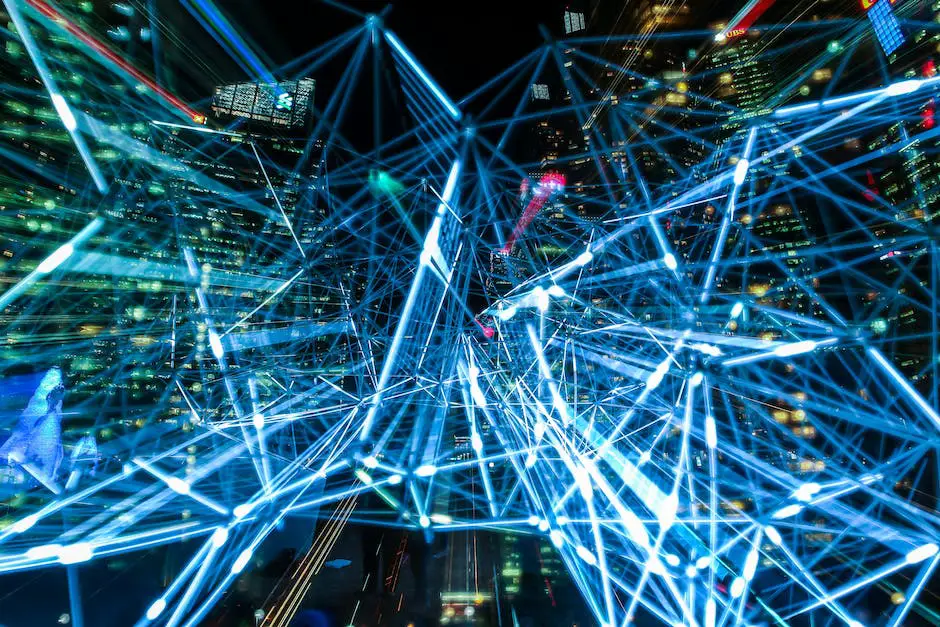It’s an era of exponential technological advancement, where the boundaries of human comprehension are being pushed further each day. One such boundary-pushing paradigm is Artificial Intelligence (AI) imaging, a concept that has transformed our understanding of visual perception and has begun to revolutionize numerous industries worldwide.
With roots deep within machine learning and deep learning algorithms, AI imaging transcends traditional image processing, providing new dimensions to the data we can extract and analyze from images. This paper ventures into the intriguing world of AI imaging, discussing its fundamental principles, its widespread applications across different sectors like healthcare and security, and even delving into perceived challenges and concerns.
Contents
Understanding the Basics of AI Imaging
Understanding AI Imaging
Artificial intelligence (AI) imaging refers to the application of AI technologies and algorithms in the processing and analysis of images. It involves the process of capturing, manipulating, and interpreting visual data using AI and its subsets, machine learning (ML) and deep learning (DL). The advent of AI imaging can be traced back to the 1960s, when the first image processing techniques were developed. However, the field has seen a dramatic rise in interest over recent years due to the advancements made in AI technologies.
The primary component of AI imaging is a convolutional neural network, a deep learning-based algorithm designed to process pixel data. It imitates the human brain’s process of recognizing patterns, enabling AI systems to analyze visual content in a more detailed and accurate manner. Convolutional neural networks commonly use supervised learning techniques, where they train on a labeled dataset, learning to recognize specified features within images.
AI Imaging Techniques and Technologies
Machine learning and deep learning play integral roles in AI imaging. These techniques allow computers to learn directly from examples and experiences in the form of data. They are particularly well-suited to the task of image recognition and analysis, which requires the ability to recognize patterns, assign categories, and make predictions.
Machine learning is a method used to implement AI, where a system can learn and improve from “experience” without being explicitly programmed. In imaging, machine learning allows for the analysis of large volumes of imaging data, through which the algorithm can recognize patterns and make conclusions. It is these conclusions that provide the actionable insights from the imaging data.
Deep learning, on the other hand, is a subset of machine learning. It structures algorithms in layers to create an artificial neural network that can learn and make intelligent decisions independently. In the context of imaging, deep learning algorithms, specifically convolutional neural networks, identify objects and parts of objects in images, emulating the way that humans visually perceive the world.
Decoding AI in Imaging: Separating Fact from Fiction
There are several misconceptions revolving around AI and imaging. One such fiction suggests that AI will entirely replace professionals like radiologists.
Although AI will undoubtedly revolutionize these roles, it’s important to remember that they are not necessarily threatened with extinction. After all, while AI is exceptional at processing data and drawing basic conclusions, the final analysis and verification of the results are tasks that still necessitate a human touch.
Another prevalent myth is the belief that AI is infallible. Although AI can significantly minimize error rates in image interpretation, it’s not entirely devoid of mistakes. The performance of AI largely pivots on the quality and diversity of data it’s trained on. Incorrect predictions can still occur when the provided data is biased or unrepresentative.
Lastly, the claim that AI imaging belongs to an unforeseen future is very much a fallacy. The reality is that AI imaging is alive and well, functioning in an assortment of sectors like healthcare, autonomous driving, and security systems. This highlights its practical utility as well as its vast potential for future use.

Applications and Uses of AI Imaging
The Role of AI Imaging in Modern Healthcare
Artificial Intelligence (AI) has emerged as a game-changer in the healthcare sector, particularly through its enhancement of imaging capabilities which greatly assist in accurate diagnosis, informed prognostication, and effective treatment planning – an innovative application commonly referred to as AI Imaging.
A common use of AI imaging is in mammography, where it has significantly improved breast cancer detection. By filtering out insignificant noise and accentuating crucial details, AI imaging offers high precision scans to ensure early and precise detection.
Similarly, in retinal scans to identify diabetic retinopathy – a serious eye condition related to diabetes – AI imaging facilitates accurate examinations surpassing a human eye’s capacity and reducing the likelihood of errors.
AI Imaging for Security
AI Imaging is also a significant game changer in the field of security and surveillance. Its potential to detect and recognize faces and features has been instrumental in enhancing security measures.
For example, AI Facial Recognition Technology is widely used in airports and other high-stakes security areas to correctly identify individuals. It uses sophisticated algorithms to map facial features from a photo or video. It compares this information with a database of known faces to find a match.
AI Imaging in Entertainment
The entertainment industry is also capitalizing on the capabilities of AI imaging. Visual effects consistently depend on AI technologies to create staggering, realistic imagery that enhances storytelling. AI algorithms help to create 3D environments and vivid character animations, raising the bar for visual effects in movies, video games, and virtual reality experiences.
AI Imaging in Autonomous Vehicles
AI imaging is also being leveraged in the field of autonomous vehicles. Gathering data from a camera, AI algorithms generate a 3D model of the environment around the vehicle. This model is continuously updated as the vehicle moves through the environment. This allows the AI to make real-time decisions about steering, acceleration, and braking, thus enhancing the safety and efficiency of autonomous vehicles.
Decoding AI Imaging: Differentiating Fact from Fiction
Artificial Intelligence (AI) imaging has extended our abilities beyond traditional scopes, offering improvements in a plethora of sectors. However, distinguishing between what AI imaging can actually deliver from the often hyperbolic expectations is crucial.
While continuous advancements are made in AI imaging, it already offers unique capabilities including enhanced diagnostic accuracy in healthcare, upgraded security features, augmented reality in the entertainment industry, and supported efficient autonomous vehicles.
It is also vital to acknowledge the hurdles and ethical issues pertaining to AI imaging. Privacy concerns in the security sector, diagnostic misclassifications in healthcare due to inaccuracies, and job displacement issues in the entertainment sector are some of the confrontations that AI imaging has to overcome. These challenges emphasize the need for responsible utilization of this cutting-edge technology despite its enormous potential.

AI Imaging Challenges and Limitations
An In-depth Look at AI Imaging
AI imaging is a powerful technology that leverages artificial intelligence to analyze and process images. This process involves training machine learning models on extensive image datasets to derive patterns and insights. Various sectors have found utility for this technology: it aids in interpreting medical scans in healthcare, it enables autonomous vehicles to decipher road conditions, and it assists surveillance systems in identifying suspicious activities.
Current Technical Limitations
While AI imaging technology has made substantial progress, it is still plagued by technical challenges. One of the key issues is the necessity for huge amounts of labeled data, which can be both expensive and time-consuming to acquire.
Errors can also arise during the labeling process, leading to inaccuracies in subsequent image interpretations. Even with considerable data, these systems can struggle with images that vary greatly from their training data. For instance, an AI trained on medical images of a specific demographic may not accurately analyze scans from a different demographic.
Potential for Misuse and Ethical Concerns
AI imaging technology also introduces numerous ethical considerations. There is, for example, the potential for misuse in the form of deepfakes, where an individual’s likeness can be superimposed onto another’s in an image or video. This technology raises concerns about consent, as well as issues surrounding slander or misinformation.
In addition, with the increasing pervasiveness of AI in surveillance systems, there are growing concerns about infringements on individual privacy. Public acceptance of such systems widely varies, leading to ongoing debates regarding ethical usage and oversight of these systems.
Inherent Bias in AI Imaging
Another significant issue pertains to inherent bias in AI imaging. Bias can stem from the data used to train the AI; if the dataset disproportionately represents certain demographics over others, the AI will be more accurate for those demographics and biased towards them. A serious consequence of this bias can be observed in facial recognition systems, where racial and gender biases have led to wrongful identification.
AI Imaging and Privacy Issues
The increasing adoption of AI imaging technologies, particularly in surveillance and facial recognition, brings about numerous privacy concerns. The potential for mass data collection and monitoring paves way for potential abuses, including unwarranted surveillance, racial profiling, and breach of privacy.
While strict data handling policies can help mitigate some of these issues, the balance between harnessing the benefits of AI imaging and protecting individual privacy continues to be a difficult one to strike. Transparency in AI operations, including proper disclosure about data collected and its usage, can play a pivotal role in alleviating some of these concerns.
Wrapping Up
AI imaging certainly has the capacity to revolutionize numerous sectors. However, it is imperative that the manifold challenges, limitations, and misconceptions that surround it are comprehensively addressed. By doing this, we can ensure that AI imaging is used in an ethical, effective, and fair manner across various applications.

The Future of AI Imaging
AI Imaging: Anticipating the Future
Artificial Intelligence (AI) is progressively pervading various sectors, with healthcare standing out as a key beneficiary. In healthcare, AI imaging is bringing transformative changes in disease diagnosis, medical image analysis, patient monitoring, and therapy planning. Peering into the future, we find that AI imaging holds even more promise. Its increasing technological advancements, research expansion, and wider adoption in medical environments all point to a bright future.
Potential Future Developments
One of the potential future developments in AI imaging is the achievement of fully automated image analysis. Current AI imaging systems require human supervision for validation of findings. In the future, with improved machine learning algorithms and higher processing speeds, AI systems are expected to attain complete accuracy, making them capable of independent operation without the need for human intervention. This development may lead to a reduction in the workload of human radiologists, enabling them to focus more on complex cases that require expert judgment.
Widespread Adoption in Remote Areas
Another anticipated future outcome is the widespread adoption of AI imaging in remote and under-served areas. As technology becomes more cost-effective and readily accessible, AI imaging can potentially bridge the gap between sophisticated healthcare facilities and underserved populations. Additionally, AI imaging can combat healthcare disparities in remote areas lacking in medical imaging specialists.
Advances in Predictive Analysis
Similarly, AI imaging promises significant advances in predictive analysis. By combing through extensive sets of data and patterns, AI algorithms can predict health trends and generate early warning signs for various diseases, thereby potentially unlocking new preventive approaches in healthcare.
Challenges Ahead
However, the future of AI imaging is not without challenges. Questions surround the ethical implications of AI in healthcare, particularly with respect to data privacy and the potential for misuse of AI systems. The reliance on large volumes of sensitive patient data for training AI models raises significant privacy concerns, necessitating stringent data governance policies.
Additionally, the potential for AI systems to make incorrect diagnoses or predictions – with serious, possibly fatal, consequences – makes it incumbent upon developers and practitioners to ensure the utmost accuracy and reliability of these systems.
Potential Dehumanization of Healthcare
Furthermore, there are concerns about the potential dehumanization of healthcare. As AI systems become more sophisticated and the human element in diagnosis and treatment potentially decreases, patients may feel a lack of personal connection – an important component of the healing process.
Balancing Innovation and Ethics
Just as AI has been a source of both intrigue and skepticism, the future of AI imaging carries a blend of excitement and caution. As we move further into this new frontier, we need to be mindful of balancing the pursuit of technological innovation with maintaining established ethical standards and preserving the very human elements of healthcare.
The landscape of AI imaging is remarkably dynamic, with new enhancements and revelations surfacing routinely. As profound as the impact of this technology may be today, it’s the potential of what’s yet to come that truly captures the imagination.
With the relentless progression of research and technological enhancements, we anticipate not just refinements of existing methodologies, but also the emergence of unprecedented novel capabilities in AI imaging domain.
The forthcoming advancements hold promise of resolving present limitations, raising ethical standards, and disrupting societal and technological growth patterns. It, therefore, becomes essential for us to understand, engage with, and steer this powerful technology in the right direction.

Emad Morpheus is a tech enthusiast with a unique flair for AI and art. Backed by a Computer Science background, he dove into the captivating world of AI-driven image generation five years ago. Since then, he has been honing his skills and sharing his insights on AI art creation through his blog posts. Outside his tech-art sphere, Emad enjoys photography, hiking, and piano.

